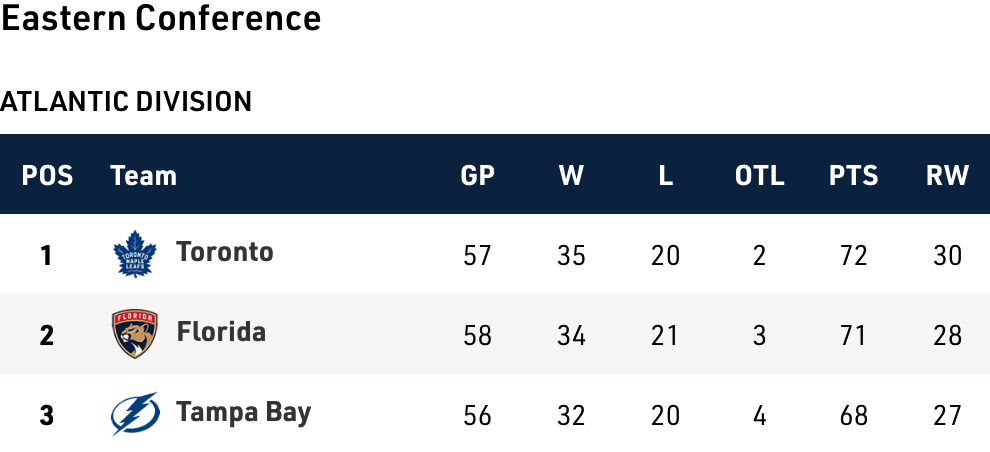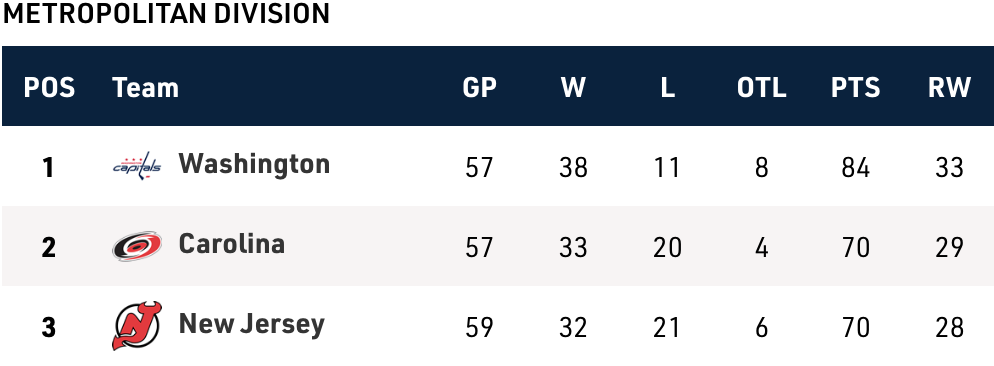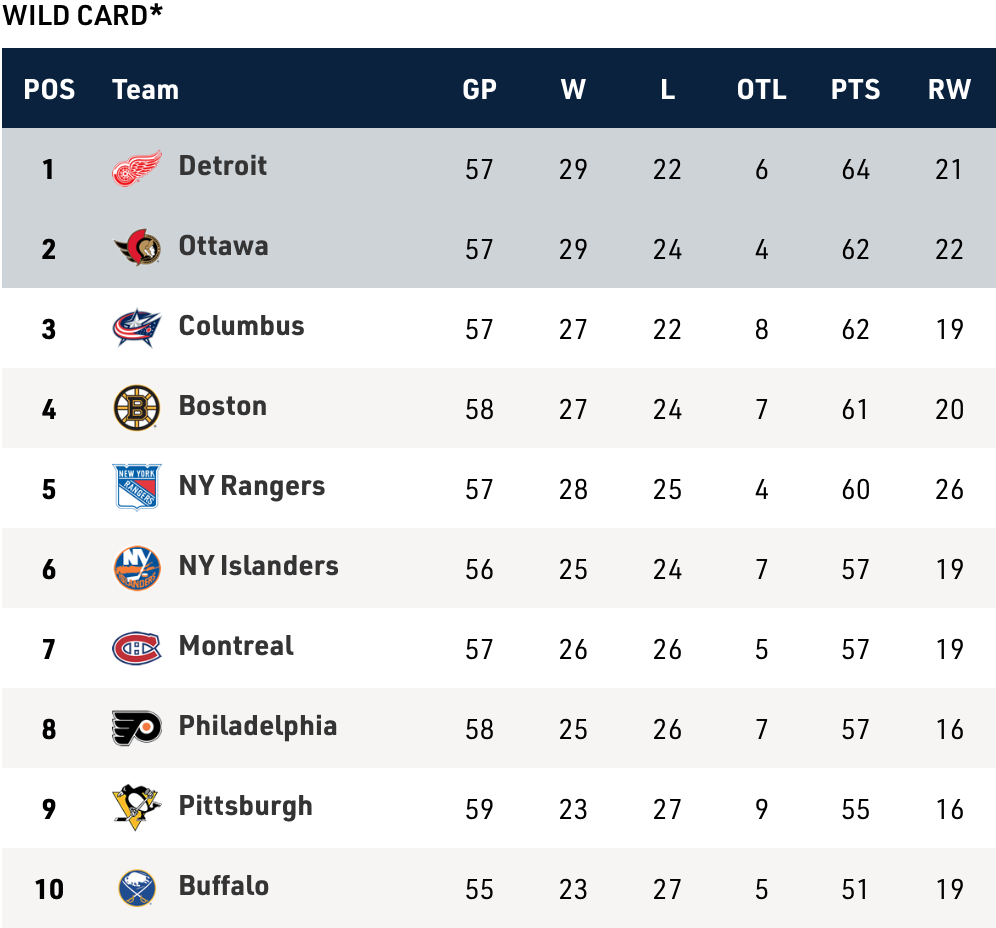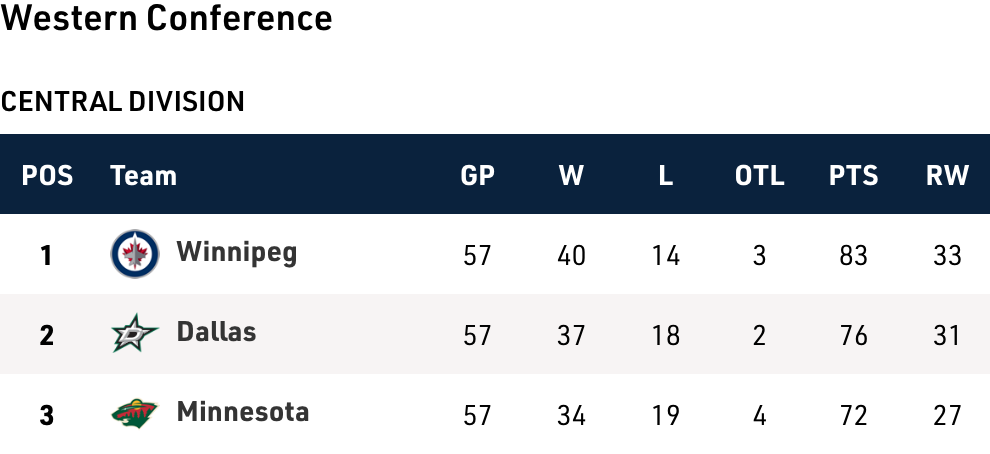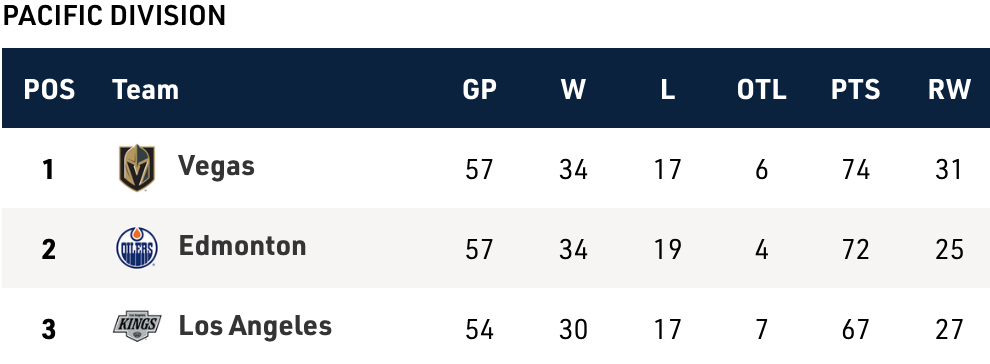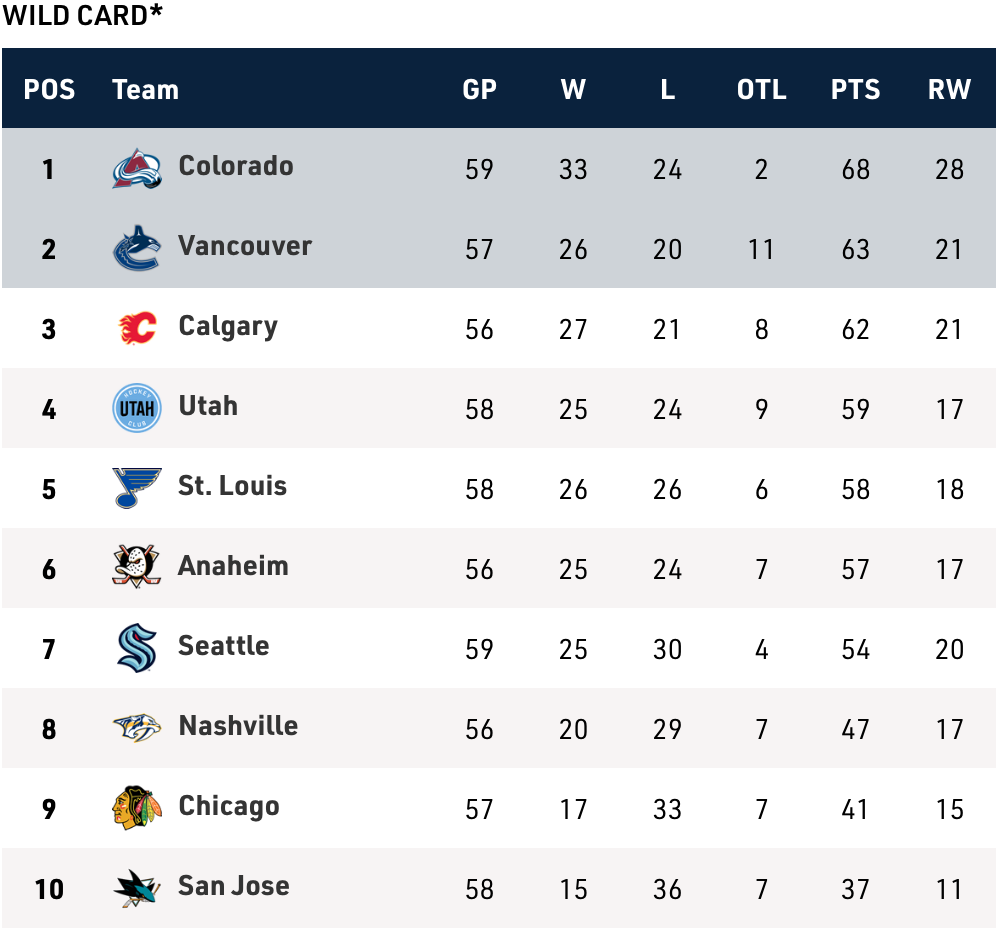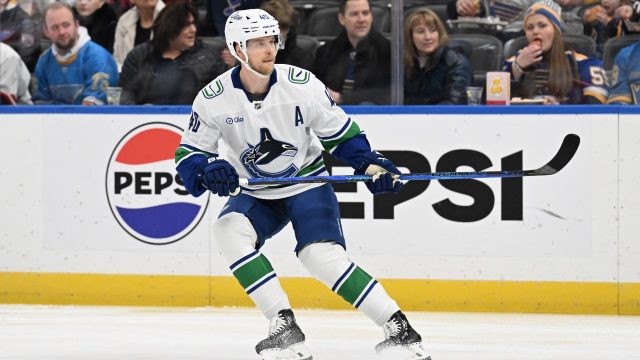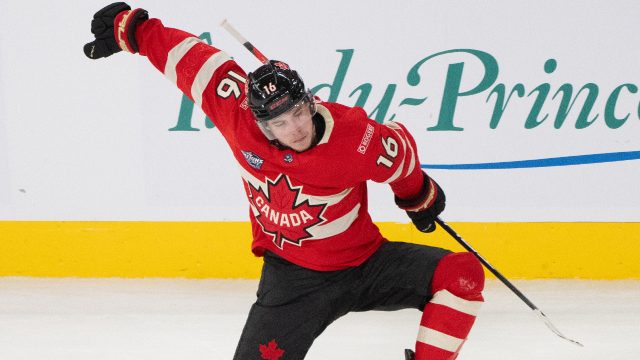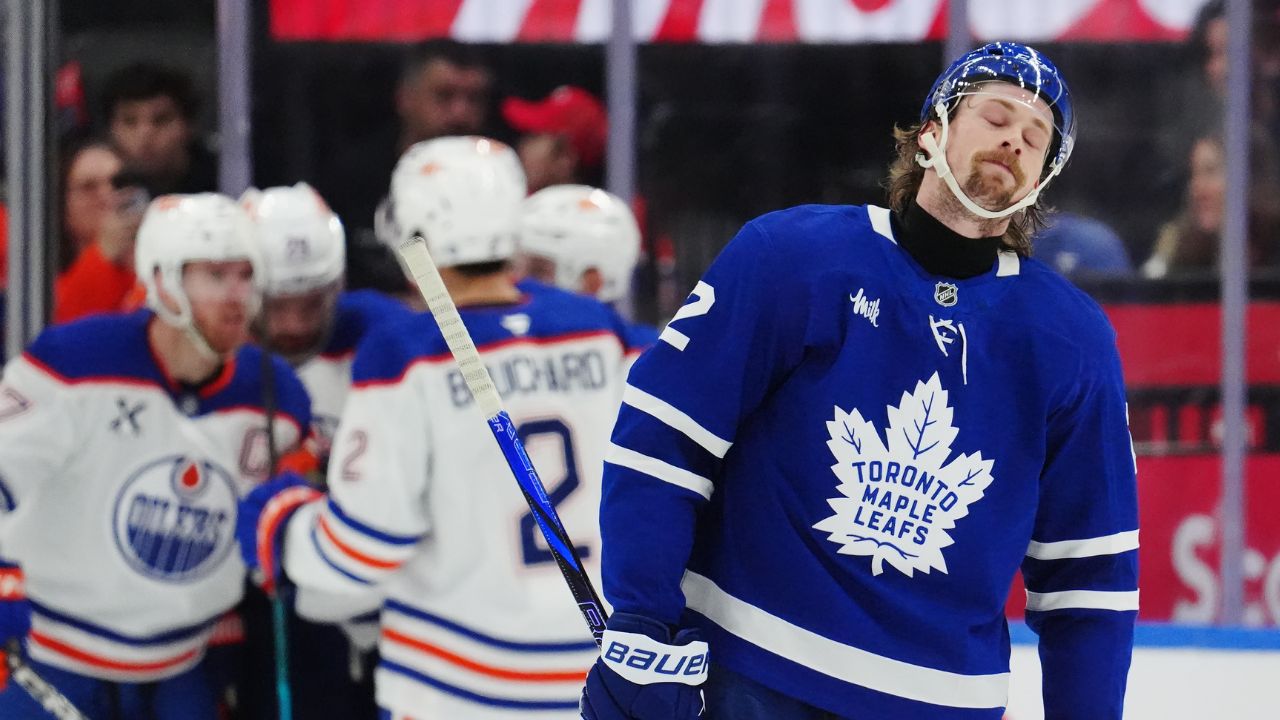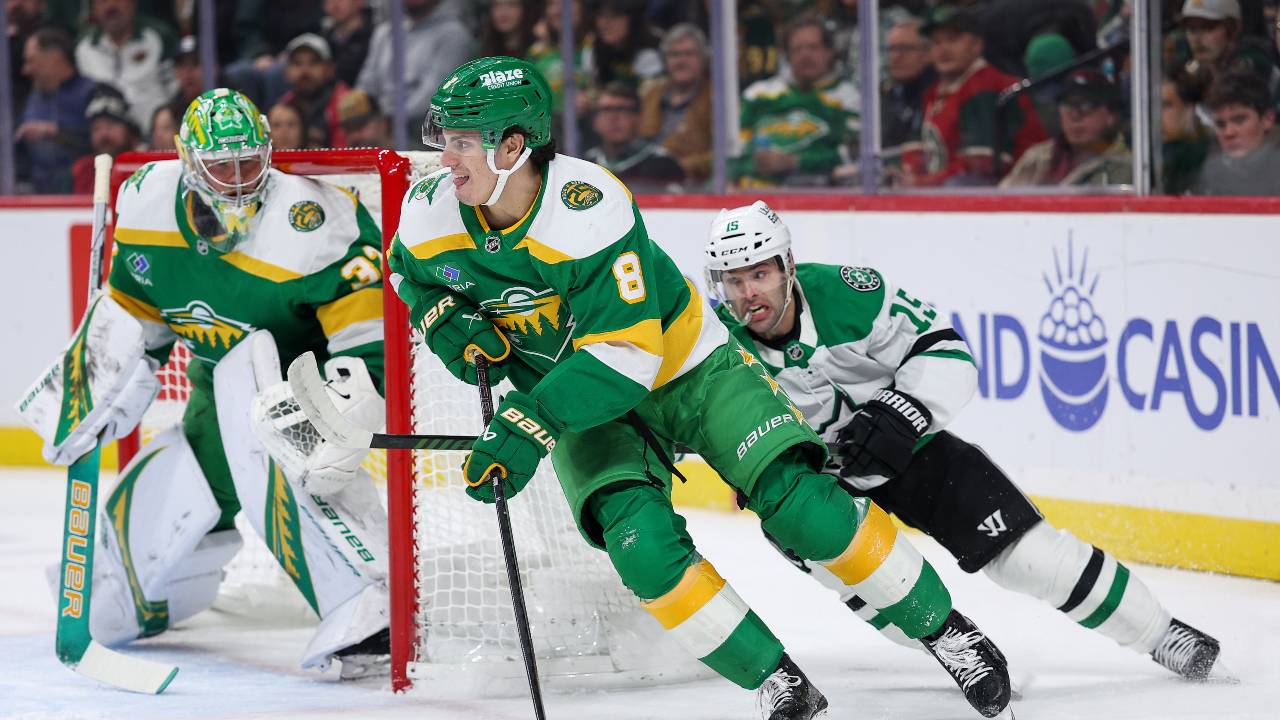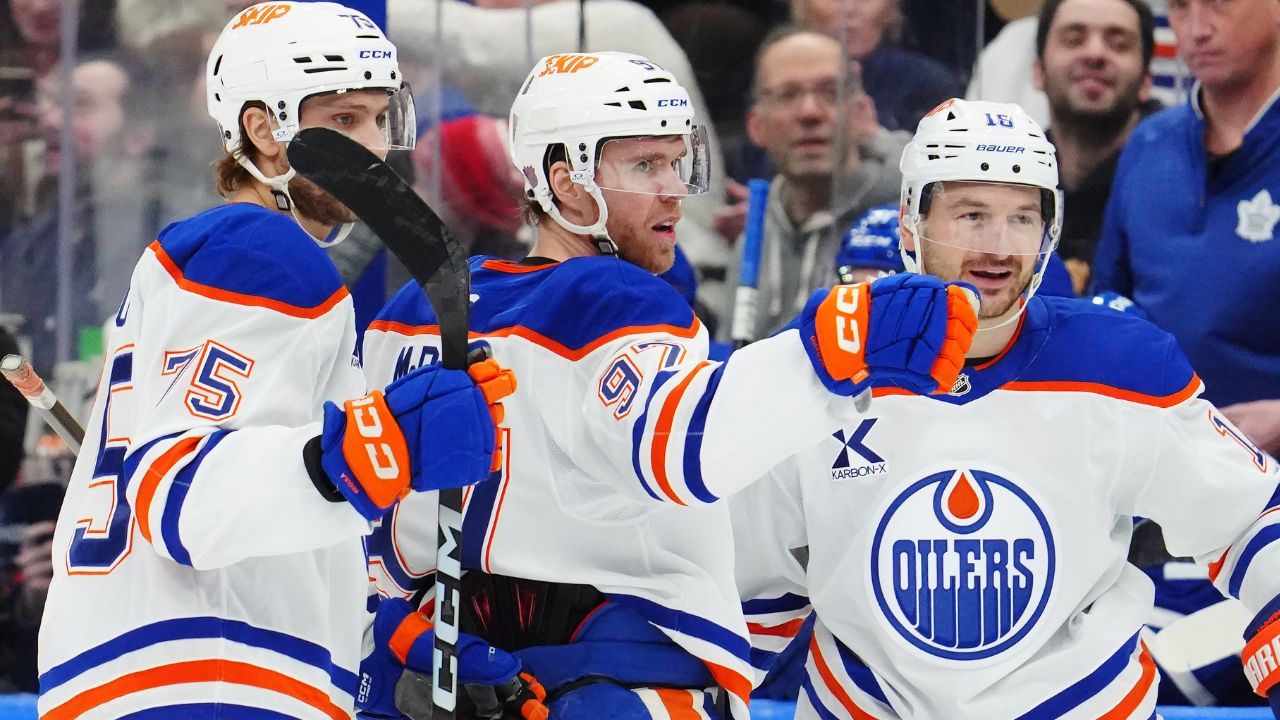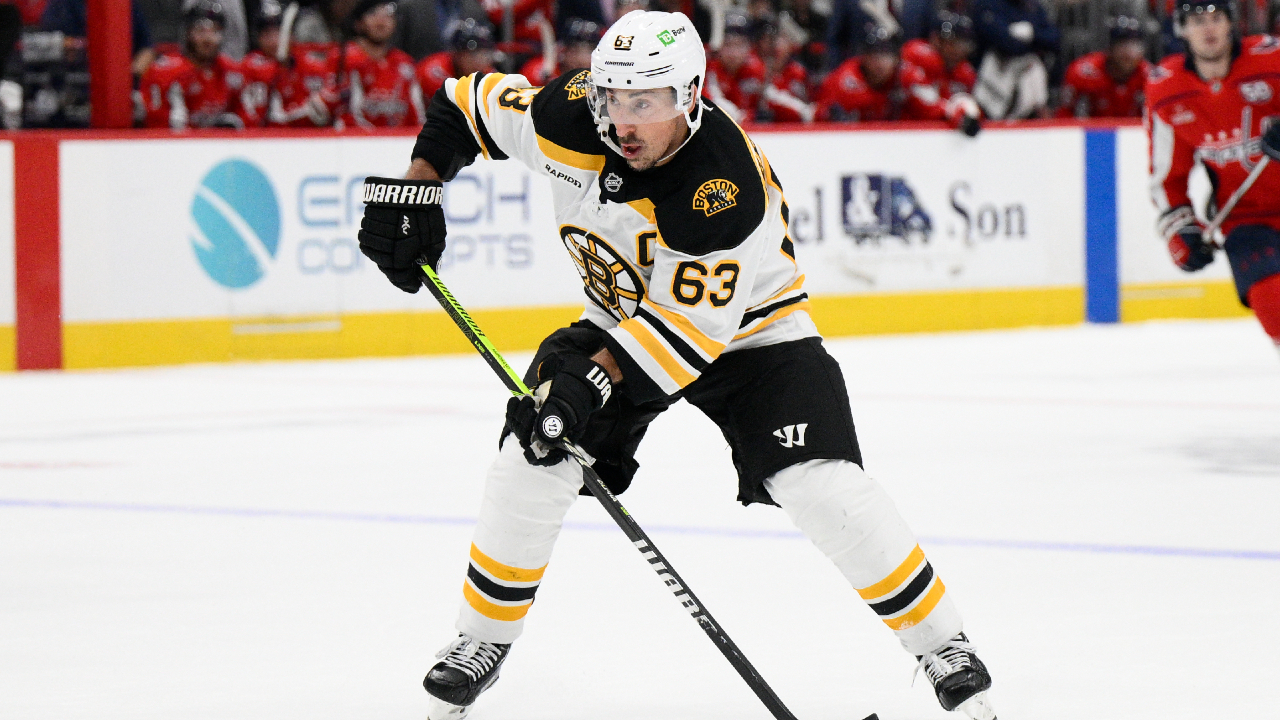
The NHL returned from its 4 Nations Face-Off break over the weekend and very quickly the talk of the hockey world has shifted from a dreamy best-on-best event, to dreams of a busy upcoming trade deadline.
We’re less than two weeks away from the March 7 trade deadline and there’s still much to be decided. Sure, we know who some of the buyers will be. Toronto and Florida are in a battle to control the Atlantic, while Washington and New Jersey will look to improve their odds. You can never count Vegas out from doing something big, while Edmonton eyes a return to the Stanley Cup Final and Winnipeg looks to separate as the West’s best team.
We know some of the sellers, too. Chicago has some players available, including a top-four defenceman who’s asked out. St. Louis has become a surprising team to watch as a seller as well, while Buffalo — disappointingly at the bottom of the East — has tough decisions to make.
And then there are a bunch of teams in between it all, having to decide whether to buy, sell or do some combination of both.
This is the focus of today’s playoff push, as we’ll begin our look at the stretch run of the regular season.
EASTERN CONFERENCE
BUYERS TO WATCH
Toronto Maple Leafs: It’s no secret that the Maple Leafs will do something by the trade deadline, and that their primary need is another centre. Ideally, that’s a 2C who could challenge John Tavares, though a more realistic target could be a 3C with some scoring punch to his game (like Brock Nelson).
But the Maple Leafs aren’t swimming in accumulated cap space or LTIR room as some other teams are, and so there’s an interesting case to be made that they should consider trading someone such as Max Domi to accommodate a more splashy move.
As pressure builds for this Core Four to finally find playoff success, the backdrop this year is that both Tavares and Mitch Marner have expiring contracts, which means the Leafs will have some very important players to discuss the futures for in the next couple weeks, and after the dust settles on March 7. The general feeling is they’ll stick it out with both and neither has appeared on Nick Kypreos’ trade board. Another bad playoff showing for the team, however, and who knows what direction management will take.
This trade deadline is as much about setting Toronto up for post-season success as it is ensuring there is an obvious case to make for pushing ahead with the same core past this season.
Washington Capitals: The best team in the East by 12 points — and one of just two NHL teams that had no representation at the 4 Nations Face-Off — Washington returned from the break by outscoring Pittsburgh and Edmonton 15-6 in two weekend wins.
This is a team as all-in as you could want to be, and with a couple of big injuries to players who won’t be returning, the Capitals have $16.68 million in LTIR space, meaning they could do all sorts of things at the deadline.
They’ve already re-acquired Lars Eller this season and, perhaps, those are the kinds of depth moves Washington makes to bolster itself down the lineup and prepare for injuries. After all, so much changed with this team last summer and all of the off-season additions have clicked so well that there may not be a need to go overly big by March 7.
But if they want to, the Caps could make the league’s best team even more dangerous.
Florida Panthers: We have to mention the defending champs in here because of how quickly their cap outlook could change. The Panthers were shaping up to have roughly $3.5 million in cap space at the deadline, but now comes news that Matthew Tkachuk’s injury could be long term.
However, what’s not clear yet is how long term that will be. Head coach Paul Maurice said Tkachuk will be “playing for us this year” but does that mean he’ll return in the regular season or playoffs? If Tkachuk is put on LTIR and the team knows he’ll miss the rest of the regular season, they’ll have that much more cap space to do business with by March 7.
And we know how aggressive GM Bill Zito has been.
Meantime, Sam Bennett and Aaron Ekblad are still without contract extensions, on track to hit free agency in July.
SELLERS TO WATCH
Pittsburgh Penguins: While there were some missteps early in Kyle Dubas’ tenure as Penguins GM (like signing Tristan Jarry, now in the minors), this is probably the toughest front office gig in the NHL because of the forced balancing act. Aching for a rebuild, the Penguins just can’t step too far back as long as Sidney Crosby is around, and he’s under contract with the team for another two years.
His presence also makes it harder (or impossible) to trade Rickard Rakell or Bryan Rust, productive linemates for No. 87.
So, while they should be sellers, the Penguins may not be able to do a lot of fun stuff for us to watch by the deadline. Still, after Erik Karlsson put together a strong tournament at the 4 Nations, perhaps interest could be renewed in some places if Pittsburgh was willing to use its last salary retention slot to ease the burden of his $10-million cap hit through 2026-27. That would be a flashy move the Penguins could make. Though, we should note, it may be more attractive for some teams to pull off in the summer, after Karlsson gets a $5-million signing bonus on July 1.
-
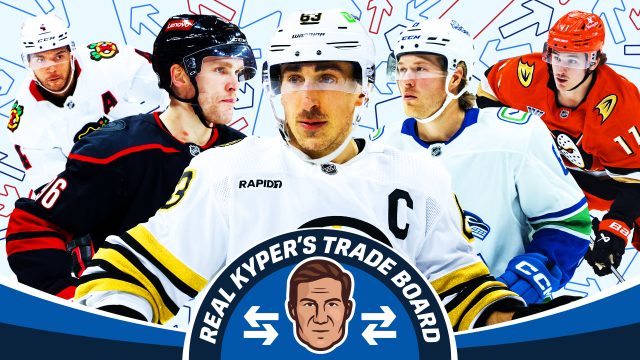
-
Real Kyper’s Trade Board
Hockey Insider Nick Kypreos shares the latest intel on players who could be on the move ahead of the March 7 trade deadline.
Buffalo Sabres: The Sabres went into the break winning four of their last five and then returned with a massive 8-2 win over the Rangers on home ice. Even so, a strong finish would once again likely be too little, too late for the last-place Sabres, who are still 11 points out of a playoff spot.
It’s a time to tread carefully. The Sabres have many names in the rumour mill, including 24-year-old centre Dylan Cozens signed for the long-term, and 23-year-old defenceman Bowen Byram, who will be an RFA this summer. Defenceman Mattias Samuelsson (24) is signed at a great rate through 2030, just as the cap is set to spike.
It remains to be seen how hot GM Kevyn Adams’ seat truly is as his fifth season on the job looks likely to finish with Buffalo’s 14th consecutive playoff miss, but these are critical pieces of a young core the Sabres have to decide what to do with.
Is Buffalo’s disappointing season because the core has failed, because the front office hasn’t done well enough to surround them with productive veterans, or some combination? In time, all three of the players we mentioned could be on highly valued contracts when the salary cap spikes into the $100-million-plus. That’s the best-case scenario.
The worst-case scenario would be for Buffalo to dial back on another rebuild and watch more ex-players go on to have success elsewhere, as we’ve seen with Sam Reinhart, Ryan O’Rielly, Brandon Montour and others. These big decisions could wait for the summer, or Buffalo could be a fascinating mover to watch at the deadline.
TEAMS IN BETWEEN
Carolina Hurricanes: The Hurricanes are an odd team this trade deadline. They aren’t a seller in the traditional sense. Carolina has been a top 10 team in the league all season, sits second in the Metro, is battling for second in the conference and has advanced past the first round six years in a row. The Canes will look to add to this team and to take a run at getting over the hump — for all that playoff success, they haven’t won a game in the third round since 2006.
And they have already made the biggest trade this season in acquiring Mikko Rantanen from Colorado. It cost them Martin Necas, Jack Drury and a second-round pick, but they also managed to pick up Taylor Hall for a little scoring depth. The fit so far hasn’t been perfect, though — Rantanen has one goal and three points in seven games, while Hall has just one assist.
According to Sportsnet’s Elliotte Friedman, the Hurricanes have made a nine-digit contract offer to pending UFA Rantanen. That means the offer could be worth about a $12.5 million AAV at least, on a maximum-term contract.
With the trade deadline less than two weeks away, the Hurricanes are facing a dilemma. If Rantanen is undecided by March 7, will they look to flip him again? And what would that return look like? Necas is scoring at a nearly 90-point pace this season and has kept chugging in Colorado.
The “good” news is that since Chicago already retained half of Rantanen’s AAV, Carolina could retain another half and knock his rate down to $2.31 million. That would make him attainable to any team and open up the market for the Hurricanes.
Of course, anyone acquiring Rantanen has eyes on winning and without the guarantee it could keep him, or much time to negotiate, Carolina’s challenge would be finding a return that doesn’t end up with the team taking a step back from where it was originally. Or, the Canes could decide to push on with Rantanen, even if he doesn’t sign and they view him as a rental.
Carolina is a buyer, for sure, but this prickly situation ultimately has it as an interesting team between a rock and a hard place.
Boston Bruins: The Bruins returned from the 4 Nations break with bad news. Defenceman Hampus Lindholm is unlikely to return this season because of a knee injury, while fellow blueliner Charlie McAvoy (injured at 4 Nations) has no timeline to return after a shoulder injury that led to an infection.
Meantime, the Bruins lost in overtime to Anaheim at home in their first game back and sit one point out of a wild-card berth in the Eastern Conference and 13th in goal differential (minus-26).
The Bruins were floundering when they fired Jim Montgomery and made Joe Sacco the interim boss, but then the rumour mill cooled for a time when Boston responded with an 11-4-1 record after the coaching change into the holiday break. Since Christmas, however, the B’s are 8-11-3 — tied for 27th in the NHL over two months.
“Historically, we’ve been pretty aggressive when our team’s in a position. I think we’ll take a much more cautious approach as we approach the deadline,” Bruins GM Don Sweeney said Sunday. “May plant a seed for the draft and beyond.”
Boston plays Toronto, the Islanders, Pittsburgh, Minnesota, Nashville and Carolina before the trade deadline, but is running out of time to put a hot streak together that makes it more of a buyer. In fact, it may be too late for that. If it’s clear the Bruins will be a seller, the pertinent question is what becomes of Brad Marchand, the 36-year-old whose role diminished with Team Canada, and is a pending UFA. He’s said only that his desire is to remain a Bruin for life, but there’s still no contract extension in place.
“We’ve been in negotiations with Brad and communicating with him through the year,” Sweeney said. “We’ll have to have a conversation now that the 4 Nations is over, sit down with Brad and his representatives and have a clearer path in the next two weeks as to what his final outcome will be.”
WESTERN CONFERENCE
BUYERS TO WATCH
Winnipeg Jets: When you think of what’s coming in the economic landscape in the league, it’s fair to wonder if this is the year Winnipeg really should be aggressive in a big way and truly go all-in on a Stanley Cup run.
For the league’s smallest market in its smallest arena, it’s fair to wonder how much the Jets will be able to keep up with the highest-spending teams when the salary cap lands at around $113.5 million in three years.
For now, the Jets are the second-best team in the league and No. 1 in the Western Conference. They have two of the league’s top 12 scorers, the runaway favourite for the Vezina Trophy, one of the top shutdown lines in the game with Adam Lowry back, and the league’s best power play.
But they have needs. The Jets could stand to add another defenceman, or two, to help keep the quality looks at the net down a bit better. And they also have a need for another centre — whether Lowry is the second or third pivot, the Jets need someone else to play key minutes down the middle and have some offensive jam to their game.
And they have cap space to make a move. If the roster is left untouched until March 7, the Jets are tracking to have $12.4 million in deadline-day space, per PuckPedia, meaning they have flexibility to do lots of things. The incentive to make moves is already there, given their place in the standings, but knowing the economic realities of what’s to come should drive the Jets even more to make a splash.
Dallas Stars: GM Jim Nill has already made a pretty solid move, bringing in Mikael Granlund from San Jose to add to a dangerously deep group of forwards.
But injuries have hit this team hard. Tyler Seguin is out for the rest of the regular season, at least, while Miro Heiskanen was injured just before the 4 Nations and is labelled as month-to-month with a knee injury. Two substantial losses.
At the moment, Dallas has $12.2 million in LTIR space, though it may yet have to be prepared for Heiskanen to return before the playoffs.
Either way, for as deep as Dallas’ forwards are, we saw in last year’s playoffs that its blue line depth was tested when Chris Tanev went down. The Stars would be wise to look at other blueliners to help their cause in 2025 and should have space to do something fairly substantial. On Monday’s 32 Thoughts podcast, Elliotte Friedman floated the Stars as a potential destination for Erik Karlsson.
-
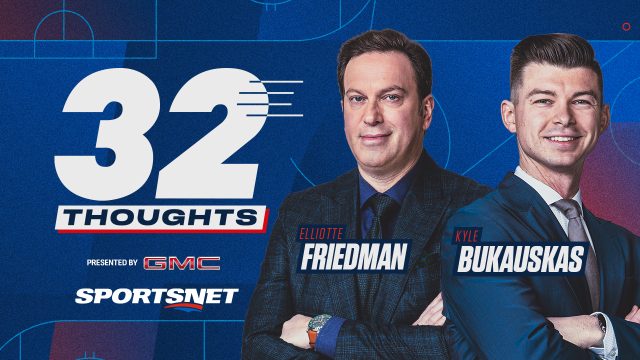
-
32 Thoughts: The Podcast
Hockey fans already know the name, but this is not the blog. From Sportsnet, 32 Thoughts: The Podcast with NHL Insider Elliotte Friedman and Kyle Bukauskas is a weekly deep dive into the biggest news and interviews from the hockey world.
SELLERS TO WATCH
St. Louis Blues: Five points out of a playoff spot, the Blues would miss for a third year in a row if they can’t claw their way back. A return win, 3-1 over Colorado, was a good place to start.
Still, it was shocking to see several Blues names appear on Kypreos’ latest trade board, including Jordan Kyrou, Pavel Buchnevich, Brayden Schenn and Justin Faulk. The Blues have been looking to trade a defenceman for some time, but four of them have no-trade clauses.
What’s funny is that, after signing 23-year-olds Dylan Holloway and Philip Broberg to offer sheets last summer, GM Doug Armstrong has already been a buyer on this year’s trade market when he acquired 33-year-old blueliner Cam Fowler, who has another year left on his contract.
But, after next season, Armstrong is preparing to step aside from the GM’s chair and make way for Alexander Steen, currently working and learning under Armstrong. If this keeps tracking toward a tough uphill climb to the playoffs by March 7, Armstrong may pull the chute on parts of this core. If enough of them go, St. Louis could be something of a kingmaker.
“As we say every year, the players will tell us what we’re going to do,” Armstrong said Sunday. “Right now, we have a massive uphill battle. I think we really dropped the ball coming out of Christmas. (Coach Jim Montgomery) had done a nice job getting the guys in a good spot and then we didn’t take advantage of a really positive schedule in January. Now, everyone has to live with the white noise around us until mid-March, but we’ve created that for ourselves.”
Chicago Blackhawks: A seller through and through, the Blackhawks aren’t going to be able to keep doing this forever and keep Connor Bedard happy. At some point, NHL players will need to be retained, or else a lot of pressure will be put on graduating prospects very quickly. Take one look at Buffalo to see the risk that entails.
At first glance, it didn’t seem like the Hawks had a whole lot of super-intriguing players to move. Hall was sent to Carolina, but that was for a mid-round pick and he never settled into Chicago. Pending UFA Ryan Donato is having a terrific career season, but turns 29 in April and seems a good bet to get moved.
Those were thought to be the most notable names who could be had out of Chicago this season, until Seth Jones’ name appeared on Kypreos’ trade board in January. The defenceman has since confirmed that he’s working with the Blackhawks to facilitate a trade to a contending team, even if it means Chicago has to use its final retention slot to absorb some of his $9.5-million cap hit.
Jones is 30 and signed through the 2029-30 season, so his timeline doesn’t appear to line up with Chicago’s. And while retaining some money for another five years is a big ask for the Blackhawks, it could also elevate Jones’ trade value and make him able to pull back some good assets to Chicago. Jones isn’t a No. 1 defenceman, but if he could be had for, say, $6 million to $7 million against the cap with the upper limit about to shoot up, he’s suddenly a very intriguing second-pair defenceman.
TEAMS IN BETWEEN
Utah Hockey Club: Utah’s 2-1 regulation win over Vancouver on Sunday was huge because it pulled it back to within four points of the Canucks for the second wild-card spot in the West. The Hockey Club has work to do and has played more games than either Vancouver or Calgary in front of them, but with more home games upcoming to Chicago, Minnesota and New Jersey this week, a nice little run could leave the front office asking some big questions.
One thing seems clear: Utah will turn into a big-time buyer very soon. It has a deep-pocketed owner eager to put his hockey team on the map and almost too many future assets. It has made 42 picks in the past four drafts, has six picks in 2025 and then another 10 in 2026. With 90 reserve slots and 50 contracts ever allowed at one time, Utah may have to soon turn some of those assets into NHL players through trades.
But will that happen during this season? Utah has oodles of cap space, projected to be about $27 million on March 7, meaning it could do almost anything it wanted on deadline day. The question, though, is if it’s really in position to buy now, or if it would be too far out of the playoffs and instead look to do big business in the summer. Meantime, it has some players (Alexander Kerfoot, Matias Maccelli, Nick Bjugstad) who could be traded by March 7.
As the defence has gotten healthy and the gap to a playoff spot closes, the front office might be thinking long and hard about pushing some chips in.
Vancouver Canucks: Already straddling the line of buyer and seller with their trading of J.T. Miller and acquisition of Marcus Pettersson, the Canucks are still facing questions about Elias Pettersson, whose no-movement clause will kick in this summer on his eight-year, $11.6-million AAV contract.
A weak showing at the 4 Nations did nothing to inspire confidence he’ll finish this season stronger, and the fact he was a game-time decision before playing both Saturday and Sunday has folks in Vancouver wondering how impactful he’ll be in a playoff push. It would seem a long shot that the Canucks would trade Pettersson now after already moving Miller, especially as long as they hold on to a playoff spot. But they failed to pick up a point in two weekend games, so their hold on that place is tenuous.
Meantime, pending UFA Brock Boeser seems all but assured of moving before the deadline, while Carson Soucy’s name has also come up recently.
The Canucks aren’t a seller in the sense they’ll be looking to spiral into a rebuild — after all, they have to have eyes on re-signing Quinn Hughes when his deal expires in 2027. But it’s wild how one of the best stories of last season, and a team that came within one win of eliminating the Edmonton Oilers in Round 2, has descended into such panic and mayhem.


